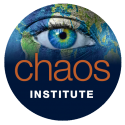TOOLS
The Chaos Tool Kit
Educational resources to help navigate your situation.
BREAKDOWn CHART
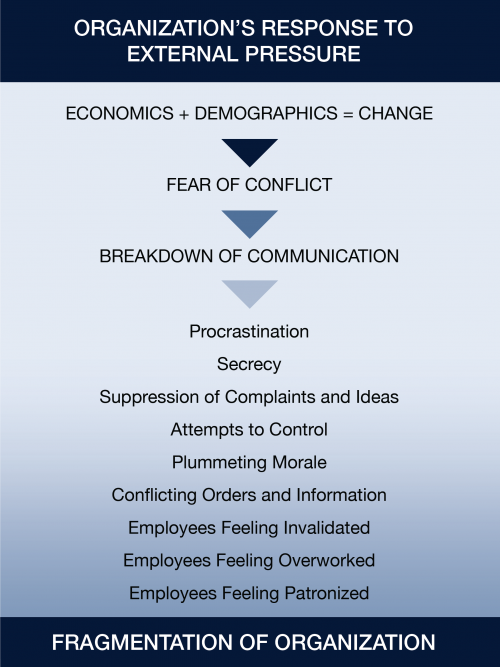
We developed the breakdown chart on the left, called “Organization’s Response to External Pressure,” based on our experience working with groups of employees in different sectors: corporate, education, and non-profit. Whenever we show this chart to people who are experiencing workplace stress, they exclaim, “That’s what’s happening where I work!” The chart depicts the fault lines in a system that is breaking apart from external and internal forces. It shows the cascading symptoms of breakdown. Discussing the chart with groups of employees helps them broaden their perspective of their situation, which is typically a pin-point view of what is going on immediately around them. Because the chart is visual, it helps them comprehend immediately that many of the problems they experience are symptoms of a system-wide fracturing. Fragmentation occurs in almost all relationships and procedures throughout the organization and is felt by its stakeholders (customers, board members, partnering organizations, etc.)
ECOMAPS
What is an Ecomap?
An ecomap is a drawing, a tool used by family therapists to explore the context of their patients’ lives. The therapist draws a circle in the middle of the page and labels it with the family’s name. Then she delineates sections of the page stemming from the central circle. Each section is labeled with the name of an aspect of the family’s life and interactions. The therapist then writes in each section relevant observations and facts. An example of an ecomap for the Jones family, before the details are added, would look like the illustration at the right.
An Ecomap of American Culture in the 1980s
Vanderkloot and her partner, Myrtle Parnell, worked together as therapists at the Morrisania Neighborhood Family Care Center in the South Bronx in the 1980s. At the time, the South Bronx was the most challenged community in the country: life was extremely stressful for people there. Traditional approaches for helping people solve life-problems couldn’t work there because their lives were so chaotic. In order to treat patients, Parnell and Vanderkloot and other therapists at the center created a program that was highly effective in that setting, and it drew national attention. But the program was nevertheless cut, and Parnell and Vanderkloot left the center to work on their own. They were driven to try to understand why their program, which was recognized as much more effective than traditional approaches, would be cut and replaced with the older approaches. They settled in for a period of intensive research, which led them to look at American society at the time (late 80’s).
As part of their process, they drew an ecomap that focused on the American culture. This ecomap cited salient data they were finding in their research. They decided that the name in the center should be “Money,” since that was (and still is), the organizing principle of American capitalistic culture. They realized they were describing the fragmentation paradigm. In the copy of the ecomap they created in 1989 (at far right), the hashmarks between the sectors indicate dysfunction.
An ecomap allows a therapist to bring together many aspects of a family’s experiences and to look for patterns that run throughout. Its breadth brings to the surface key information about the family that would not be noticed if therapists simply talked with their patients. Vanderkloot and Parnell were hoping that an ecomap of the US would help them see hidden patterns in the events taking place in the country at the time.
By drawing this ecomap, Parnell and Vanderkloot were able to see from all the data they found about problems in each sector of our society, that systemic breakdown was taking place, and that it was caused by a general set of priorities that excluded people’s needs. This led them to understand that consideration and understanding of relationships of all kinds were generally missing throughout our society.
An Ecomap for the 2020s
Let’s consider drawing an ecomap of our culture in the 2020s. Which of the sectors would still be relevant? Would you add any new sectors? What details would you include in each sector as descriptors of what is happening there? We include a blank ecomap at the right. How would you fill it out?
If you would like us to help you draw an ecomap of your family, workplace, or community, contact us.
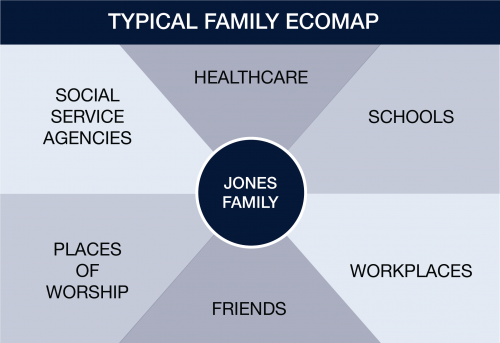
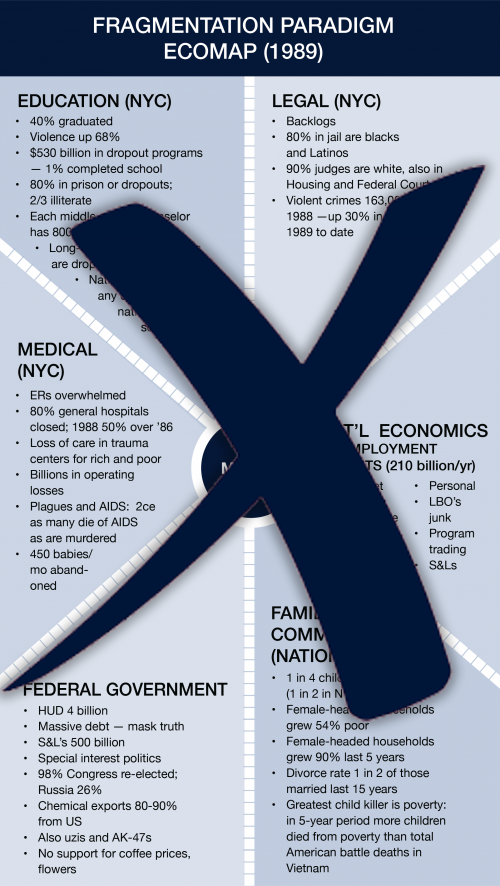
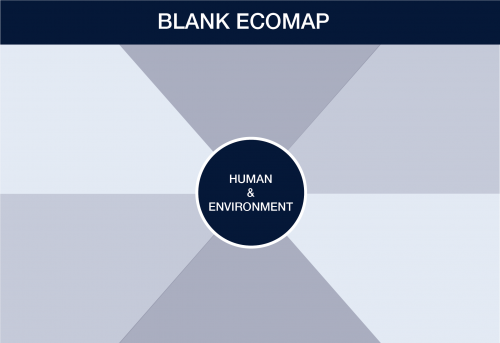
GENOGRAMS
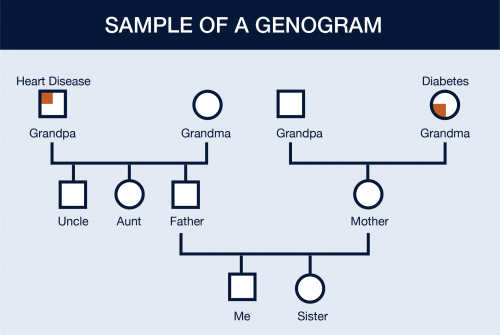
A genogram is a graphic representation of a family depicting 3–5 generations which organizes important information about each member and allows significant patterns to emerge. They are used by therapists to help patients understand how the behavioral forces flowing through past generations replay in the current generation. Standard symbols used include circles for females, squares for males, connecting lines for marriage, cross hatching on a line for divorce, and an “X” through a circle or square to indicate death, among others. Information about each person is noted near their symbol, such as age and cause of death, occupation, issues in their life, addictions, accomplishments, etc. We are including genograms in this section of tools because you may wish to learn more about them online and perhaps find a therapist who can help you draw one of your family.
Using Relationship Paradigm Skills
When Appraising a Situation
- Identify all the parts of the system involved. (Who and what).
- Identify each person’s official and unofficial roles (e.g. accountant, gossip).
- Identify the external forces bearing down on the system.
- Figure out how all the parts of the system interact (who and what).
Perhaps use an ecomap as described above. - Look for patterns (in behavior, policies, problems, etc.).
- Look for strengths in the system.
When Facilitating a Group Problem-Solving Session
- Individually interview people involved: ask each the same questions, but allow for responses to generate new questions.
- Take complete notes or record interviews.
- Review all notes; look for discrepancies, different points of view, and patterns.
- Convene the whole group as many times as necessary to work through the problem.
- In the first session find ways for each person to be fully introduced to the group, including personal information about their lives: their hobbies, where they grew up, etc.
- Provide cards on which people can anonymously write down issues too toxic to mention and a box where the cards can be placed.
- Help the group identify its strengths and weaknesses, and ways to use the strengths to address the weaknesses.
- Work up gradually to the toxic issues, and protect anonymity.
- Help the group move away from blame and toward identifying systemic forces at play.
- Make clear all progress toward managing the problem; end with action items.
